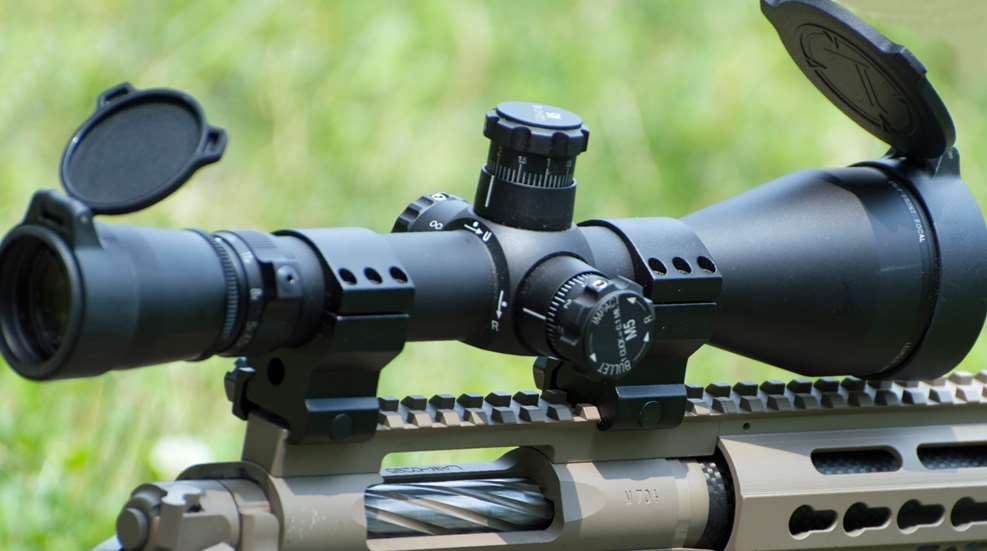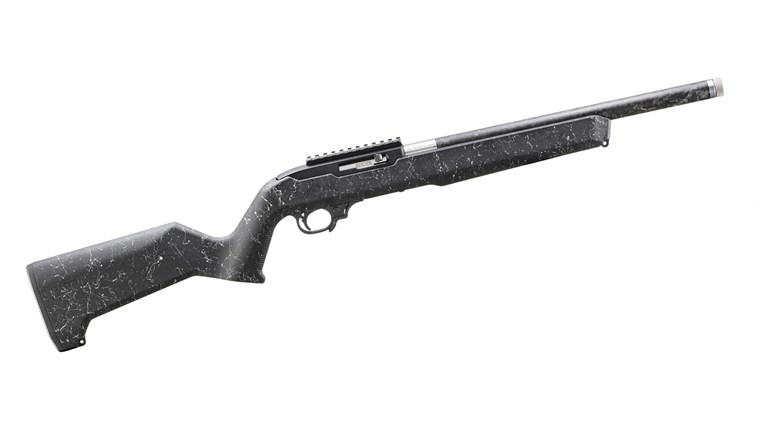
But a rifle that's over-scoped? They're everywhere and with ever-increasing frequency. I see rifle/scope match-ups that just don't make sense—scopes too large and heavy for the type of rifle they're on; scopes with too much magnification for the caliber and scopes that are just plain unnecessary.
It's interesting to note that it wasn't until the mid-1950s that scopes other than fixed 2.5X and 4X began to appear on deer and big game rifles. The fact that these scopes endured as the standard for so long was not that the opto-geeks didn't know how to cram more magnification into them, but rather because 4X was considered all that was necessary for any big game hunting anywhere. Indeed, I remember Jack O'Connor saying as much many times in the pages of Outdoor Life.
Have conditions out there in the game fields changed that much since then? Has equipment changed that much? Keep in mind that in those days the .30-06, the .270 and the .300 H&H were the most popular big game (as opposed to deer) calibers, so it wasn't like they didn't have flat-shooting rifles that could have benefited from scopes having another "X" or two.
It's true we have flatter-shooting calibers today. And yes, we have rifles and ammo that together are capable of a higher level of accuracy. And yes again, the average range at which game is taken today is further than it once was, due partially because conditions and competition from other hunters dictate it and partially because we have the equipment that allows us to. But again, it hasn't changed all that much!
Three hundred yards is still a very long shot for your typical hunter under normal field conditions, yet it is a shot that, under the right circumstances, can easily be made with a 6X scope, let alone one that can crank up to a 8X or 9X. Viewing a deer standing at 300 yards through just a 6X scope is like seeing it at 50 yards with the unaided eye. And you're not seeing that deer over fuzzy open sights that require you to shift focus between the front sight, rear sight, and target, but rather as a bright optical image with a sharply-defined reticle that's on the same focal plane as the target. In other words, hitting a deer standing 50 yards away using a 1X scope is a cakewalk.
It's unfortunate, I think, that today "quality" is becoming associated with variables of ever-higher magnification ranges; objective lenses nearly the size of manhole covers and in scopes that are physically larger and heavier than necessary. However, new products are the lifeblood of any industry, and it's cool to have the latest rifle, cartridge or scope. From the manufacturers' standpoint, the more features and performance they can claim, the more money they can ask. It's just good business. But optics is one area where more isn't necessarily better. It's also a science that dictates that you don't get "nuthin' fer nuthin'." To gain in one area of performance, you must give up something in another. You want more magnification? Then you must accept a larger, heavier scope if you expect to maintain the same twilight performance. You must also live with a smaller field of view, slower target acquisition and more critical eye alignment because of the smaller exit pupil. The longer the scope, the more it extends out beyond its support rings and the more easily it can get knocked out of zero from a bump or fall.
Want one of those Euro-style scopes with a 30mm tube? Don't buy one because you think it'll provide a brighter image—it won't—if you're comparing scopes of equal quality. The 30mm tube evolved because in Europe, where they hunt after dark, they needed thick "magnifying" reticles in their variables so they could be more easily seen by moonlight. To achieve that the reticle was placed in the first plane of focus—ahead of the zoom system rather than behind it as we do here. With the original 26mm tubes used for fixed-power scopes, there wasn't enough room inside to allow for sufficient windage and elevation adjustment, hence the 30mm tube. It had nothing to do with increased optical performance, nor does it now.
Are there any advantages to the 30mm tube? Sure if you employ it with a non-magnifying reticle system, you get beau coup adjustment, and the thicker tube is nearly 30 percent stronger than a one-inch tube of the same material. But how much adjustment and how strong of a scope do you need, and is it worth the trade-offs in terms of size and weight?
These are some of the questions you should ask yourself when shopping for a scope. It just requires a little common sense and an appreciation of the concept of balance or product symbiosis, if you will.
A typical Marlin or Winchester lever-action, for example, is chambered for cartridges that are best limited to 150 yards. Considering that, and the fact that their legendary handling qualities are compromised commensurately with the size of the scope mounted, the choice becomes clear: A fixed power 2.5X or 4X, or a low-range variable like a 1.5-4X or 2.5-6X makes the most sense.
Similarly, high-performance carbines like the Remington Model Seven, Ruger's Ultra Light, and similar short-barreled bolt guns should't be hampered by overly large, heavy scopes that change the intended handling characteristics. These short-action carbines chambered for the likes of the .243 Winchester, .260 Remington, 7mm-08 and .308 Winchester are capable of taking deer-size game out to 250 yards or more and can therefore justify mounting a fixed 6X or a variable like a 2-7X or 2.5-8X. Not only do you not need any more magnification than that, but these short, compact scopes are aesthetically pleasing given the proportions of these smaller rifles.
For our longest-range hunting—pronghorn, elk and mule deer—where the typical rifle is a 22- to 24-inch barreled bolt-action chambered in something between a .270 Win. and a .300 Mag., the now passe 3-9X variable is an excellent choice that best combines practical size, weight, and magnification range. Believe me, an elk at 350 yards looks a big as a Buick through a 9X scope.
It is only when you get into highly specialized hunting, such as using a beanfield rifle chambered for something like the 7mm Ultra Mag or Lazzeroni's .30-caliber Warbird, that scopes of 10X or more with adjustable objectives are justified. I'm talking about setting up a stand in a location where most shots are likely to be at extreme distances. As far as I'm concerned, for that kind of hunting (and some consider it more "shooting" than hunting), anything goes. You want to mount a 6-24X scope on a rifle that churns up to 50 ft-lbs. of recoil to kill a deer or elk in the next county? Be my guest.
I'm sure there will be many who disagree with me, and that's okay. After all, that's why there's such a mind-boggling array of scopes out there in the first place. I'm just old-fashioned enough to believe that empirical knowledge is the best kind, and I humbly submit that over the course of more than 90 foreign hunting trips on six continents, plus twice that many more here in the U.S., I've take the vast majority of my game through a 6X fixed-power scope. In all that time I can count on the fingers of one hand the times I felt I could have used more magnification. And I've taken more game at distances beyond 300 yards than I care to admit.

































